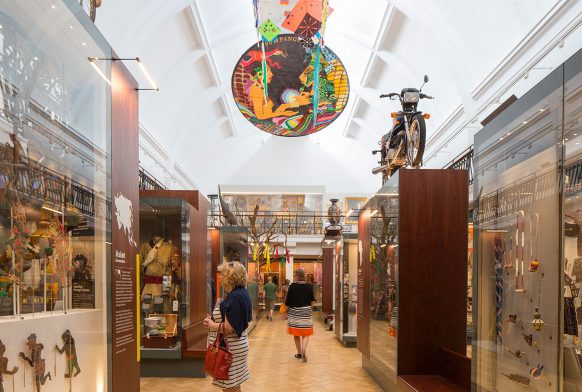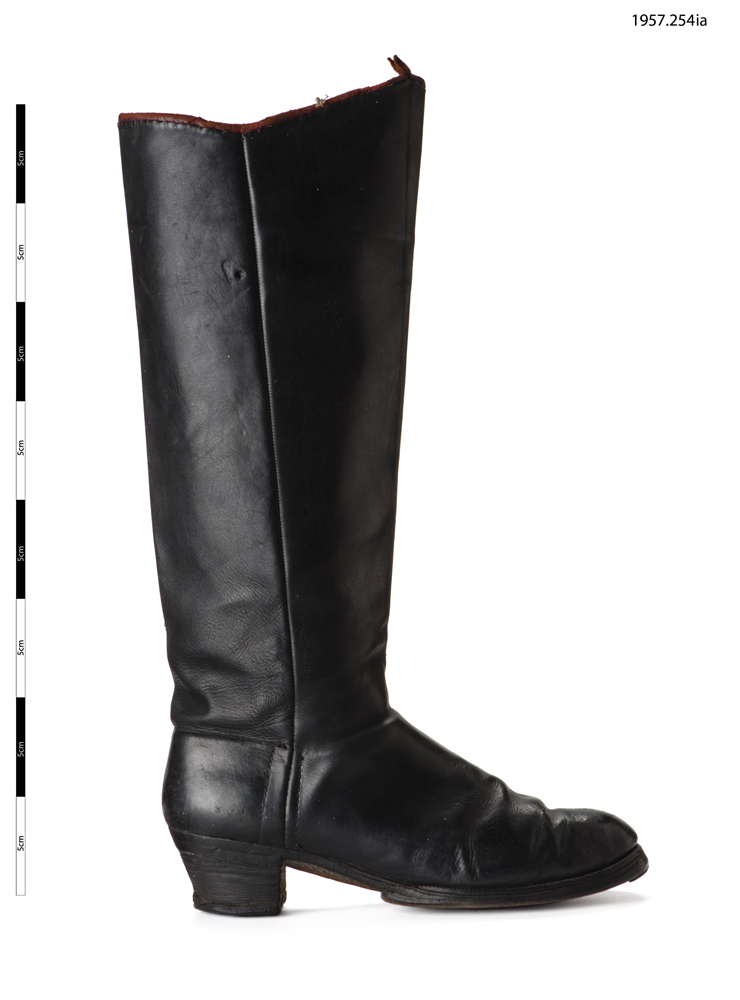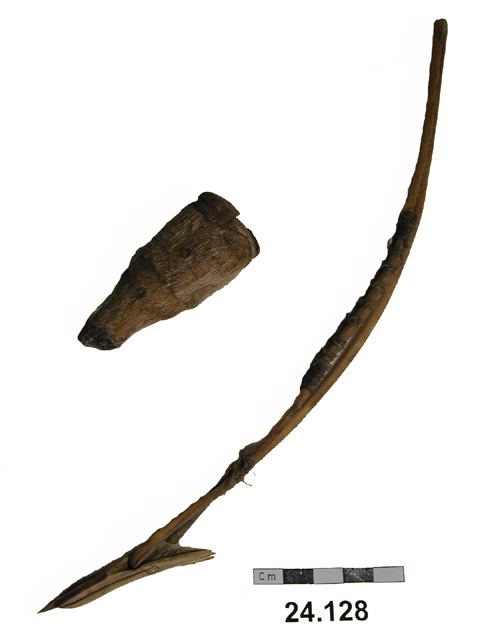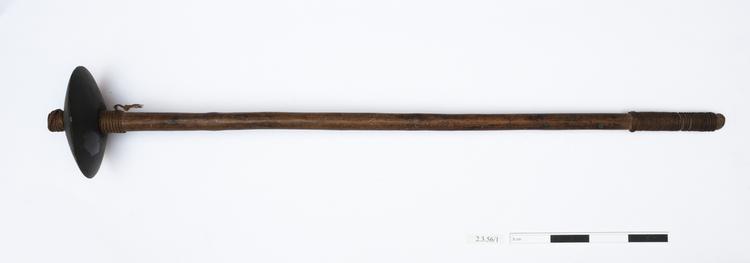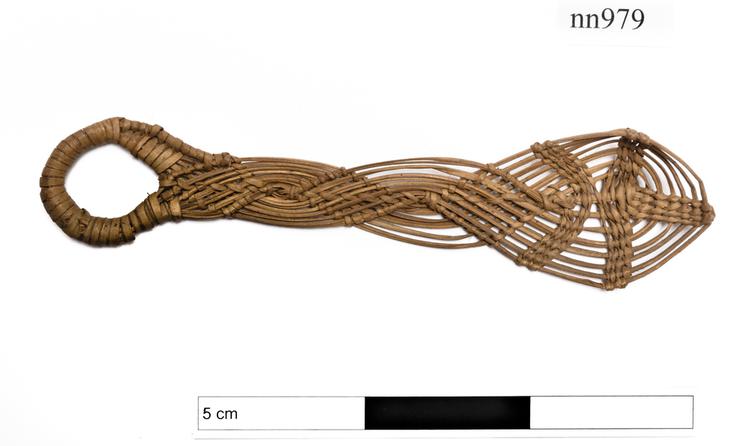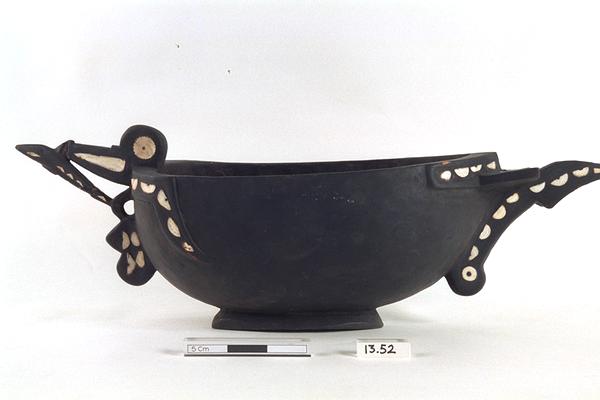


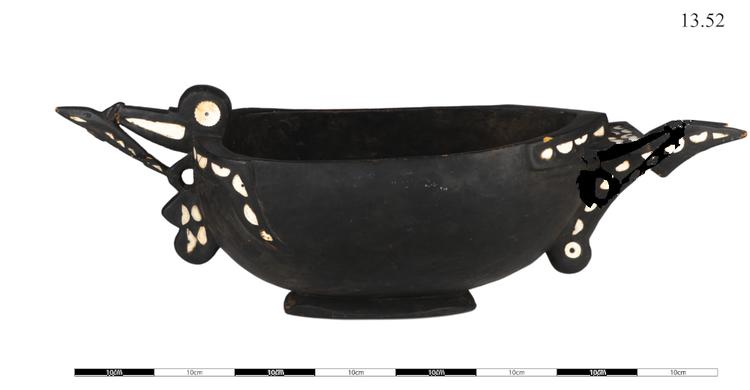
Wooden feasting bowl which has been stained black after carving and inlaid with the ground ends of conus shells as well as discs of chambered nautilus shell and triangular pieces of bone, possibly mammal bone.
The shape of the bowl is ovate in plan, boat shape in section, and stands on a pedestal of lenticular form. The round end of the bowl is ornamented with a figurehead of the head of a frigate bird, whose wings are modelled in the outer surface of the bowl. The tip of the frigate bird’s beak touches on the dorsal fin of a bonito fish, whose tail tips touch the outer surface of the bowl. Two bulges below this point indicate the male frigate bird’s inflatable crop. The tail is a hybrid, which horizontally depicts the flattened portion of the tail, and vertically depicts the long forked tail feathers of the male frigate bird. Underneath, however, there appears to be carving reminiscent of a second head, which does not seem reconcilable with the rest of the composition.
The bowl has been broken and repaired on at least two occasions.
Bowl of wood, blackened with shell inlay, in the form of a bird with a fish. Made of wood, paint, coneshell and pearlshell. Probably from Makira. In Makira and neighbouring small islands small ornamented pudding bowls with carvings of birds, fish and other motifs in place of handles were originally used particularly for personal sacrifices by men to their ancestral ghosts (see Ivens 1927:380, Mead 1973:21, Revlon 2007:104), and were later made for export (Davenport 1968). By the 1880s, when Edge-Partington visited Fiji, there was a regular trade in migrant labour with Solomon Islands which also carried artefacts for sale to foreigners. (Need to check whether E-P actually obtained this bowl in Fiji, or whether he received it from his son Thomas, who was in Solomon Islands for about 10 years to 1915).



